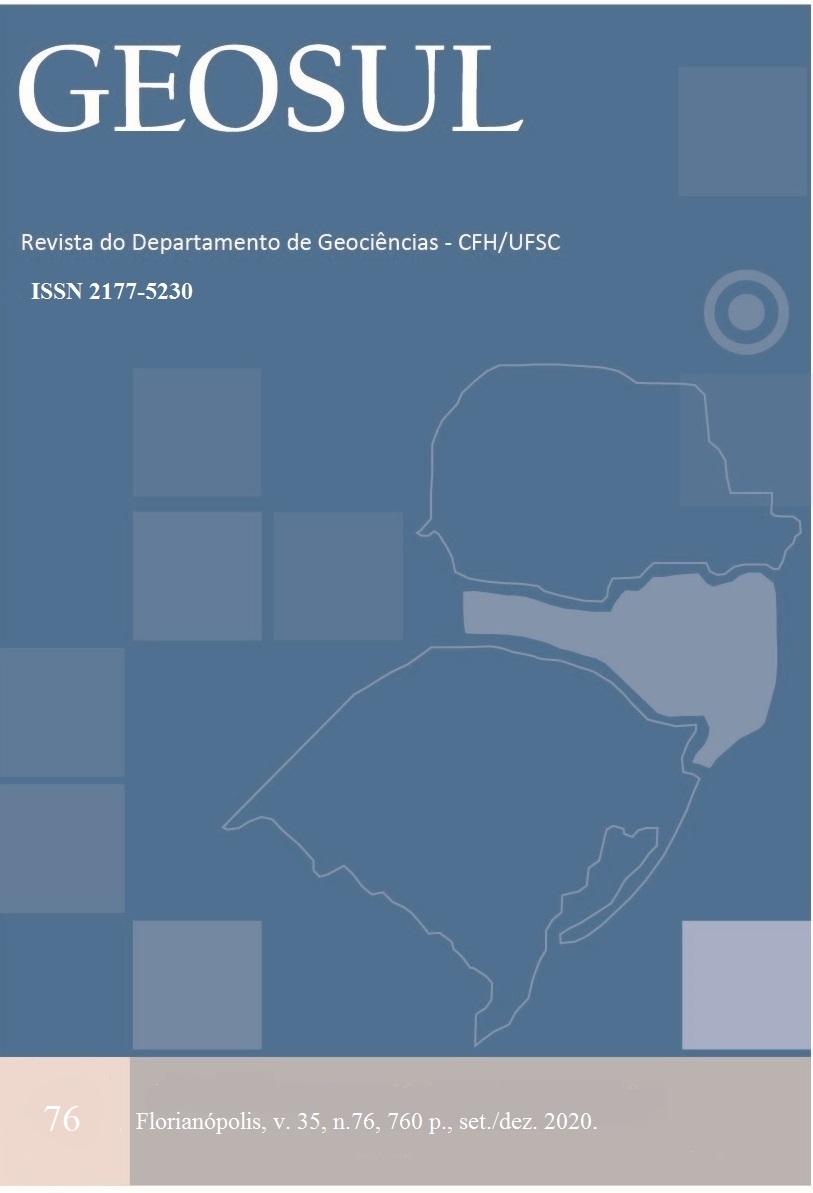Export composition and economic growth: a spatial analysis
DOI:
https://doi.org/10.5007/2177-5230.2020v35n76p377Abstract
This paper examines the relation between composition of exports and economic growth for a large set of countries, between 2000 and 2010 – a period characterized by a steep rise in commodity prices in international markets. The paper builds an index of exports quality, based on the classification by technological intensity proposed by Lall (2000). Taking into account the existence of spatial correlation among the variables, we estimate the relation between quality of exports and economic growth by using spatial panel data models. The results suggest that – despite the boom in commodities demand and prices during most of the decade – countries with export structures with higher technological content showed higher growth rates during the period of analysis.
References
Anselin, L.; Le Gallo, J.; Jayet, H. Spatial Panel Econometrics. In: Matyas, L.; Sevestre, P. (Eds.). The Econometrics of Panel Data: Fundamentals and Recent Developments in Theory and Practice. 3.ed. Dordrecht: Kluwer, 2008.
Anselin, L.; Florax, R.; Rey, S. (Eds.).Advances in Spatial Econometrics. Methodology, Tools and Applications. Berlin: Springer-Verlag, 2004.
Arellano, M.; Bover, O. Another look at the instrumental variable estimation of error-components models. Journal of Econometrics,v.68,n.1, p. 29–51, July1995.
Arellano, M.;Bond, S.Some tests of specification for panel data: Monte Carlo evidence and an application to employment equations. Review of Economic Studies, v.58, n.2, p 277–297, 1991.
Blundell, R.; Bond, S.Initial conditions and moment restrictions in dynamic panel data models. Journal of Econometrics, v. 87, n.1, p.115–143, November 1998.
Dosi, G.; Freeman, C.; Fabiani, S. The process of economic development: introducing some stylized facts and theories on technologies, firms and institutions.Industrial and Corporate Change,v. 3, n. 1, 1994.
Dosi, G.; Pavitt, K.; Soete, L. The economics of technical change and international trade. London: Harvester Wheatsheaf, 1990.
Fagerberg, J. Technology and international differences in growth rates. Journal of Economic Literature, v. 32, n.3, p. 1147-1175, 1994.
Fagerberg, J. Why growth rates differ. In: Dosi, G. et al (Org.). Technical change and economic theory. London: Pinter Publishers, 1988.
Greene, W, H.Econometric Analysis. 7.ed. New York: Prentice Hal, 2012.
Grossman, G. M.; Helpman, E. Innovation and growth in the global economy. Cambridge, MA: The MIT Press, 1991.
Haussmann, R.; Hwang, J.; Rodrik, D. What you export matters. Journal of Economic Growth, Springer, v. 12, n.1, p. 1-25, March 2005.
Holtz-Eakin, D.; Newey, W.; Rosen, H. Estimating Vector Autoregressions With Panel Data. Econometrica, v. 56, n. 6, p. 1371-1395, 1988.
Kaldor, N. Causes of the Slow Rate of Economic Growth of the United Kingdom: an Inaugural Lecture. Cambridge: Cambridge University Press, 1966.
Kaldor, N. A model of economic growth. The Economic Journal, v.67, p. 591-624, 1957.
Lall, S. The technological structure and performance of developing country manufactured exports, 1985-98. Oxford Development Studies, v. 28, n. 3, p. 337-369, 2000.
Lederman, D.; Maloney, W. Trade structure and growth. In: Natural resources, neither curse nor destiny. Washington: The World Bank, 2007.
Londe, A.; Libanio, G. A estrutura tecnológica das exportações dos países em desenvolvimento nos anos 2000: análise e implicações para o crescimento. In: ENCONTRO NACIONAL DE ECONOMIA – ANPEC, 41, 2013, Foz do Iguaçu.
ORGANISATION FOR ECONOMIC COOPERATION AND DEVELOPMENT OECD. Globalisation and Competitiveness: Relevant Indicators, Paris, OECD Directorate for Science, Technology and Industry, DSTI/EAS/IND/WP 9(94)19.
Pavitt, K. Sectoral patterns of technical change: towards a taxonomy and a theory. Research Policy, v. 13, p. 343-373, 1984.
Prebisch, R. O desenvolvimento econômico da América Latina e alguns de seus problemas principais. In: Bielschowsky, R. (Org.). Cinquenta anos de pensamento na CEPAL. v.1. Rio de Janeiro: Record, 2000.
Rodrik, D. What’s so special about China’s exports? NBER Working Paper, n. 11947, 2006.
Ros, J. Trade specialization and economic growth. In: Fanelli, J., Medhora R. (eds). Finance and Competitiveness in Developing Countries. New York: Routledge, 2002.
UNCTAD. Trade and Development Report 2009. New York and Geneva: United Nations, 2009.
Wooldridge, J. Econometric Analysis of Cross Section and Panel Data. Cambridge, MA: MIT Press, 2001.
Young, A. Increasing returns and economic progress.Economic Journal, v. 38, p. 527-542, 1928.
Downloads
Published
Issue
Section
License

Este trabalho está licenciado com uma Licença Creative Commons - Atribuição 4.0 Internacional.





